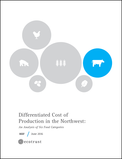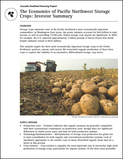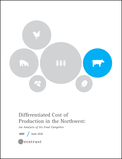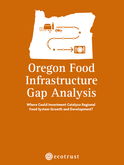Storage Crops |
Research Chapters
|
|
Overview
Storage crops represent some of the Pacific Northwest’s most economically important commodities: in Washington State alone, the potato industry accounts for $4.6 billion in state income, as well as providing 23,500 jobs. Global storage crop exports are significant: in 2009, for example, the U.S. exported approximately 3 billion pounds of frozen french fries (fresh weight estimate) valued at $635 million. This analysis targets the three most economically important storage crops in the Pacific Northwest: potatoes, onions, and carrots. We researched organic production of these three crops to explore the viability of an alternative, differentiated storage crop sector. Supply Drivers
Demand Drivers
Opportunities There is reason for optimism about the trajectory of grass-finished beef in the Pacific Northwest, given that the overall market trend is upwards. Consumers have revealed willingness to pay price premiums for grass-finished and locally raised beef. And there are key success stories in the development of niche markets and supply chains for Pacific Northwest grass-finished beef. Thus, we believe that despite the challenges, there may exist opportunities for profitable investment in grass-finished beef, provided that the investor pays attention to the following issues:
For more detail on the economics of storage crop production in the Pacific Northwest download Production Analysis: Storage Crops from the sidebar. |
Downloadable FilesBelow are combined and individual files related to storage crop production and infrastructure opportunities in WA and OR. To stay informed about next steps from this research please share appropriate information below.
Combined FileIndividual Files |











